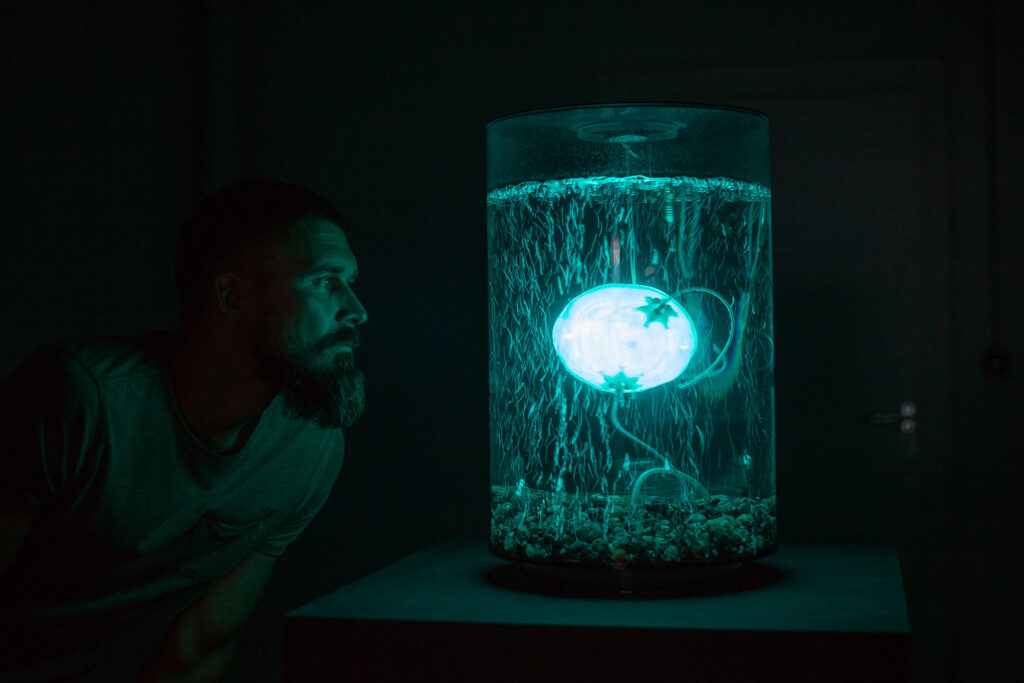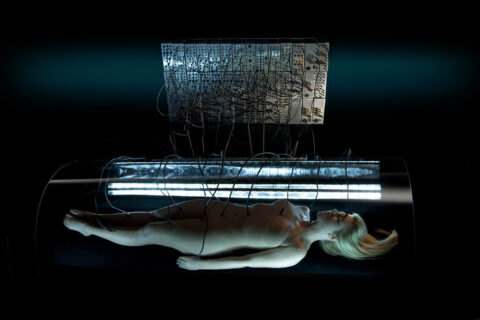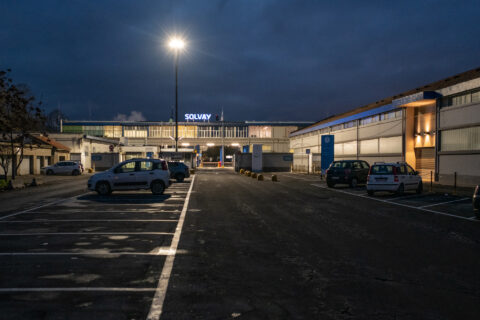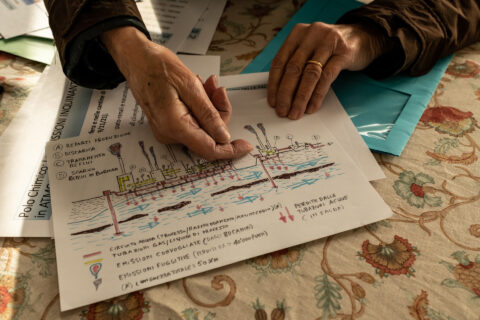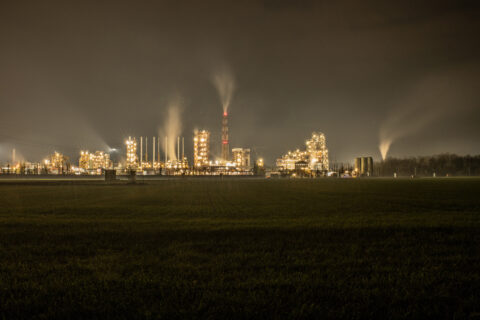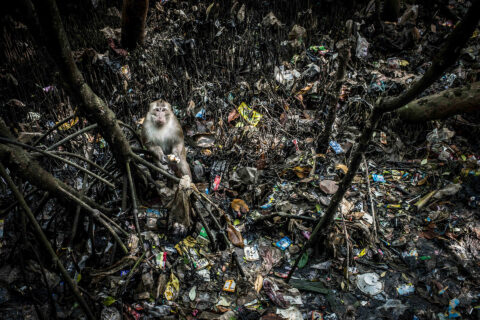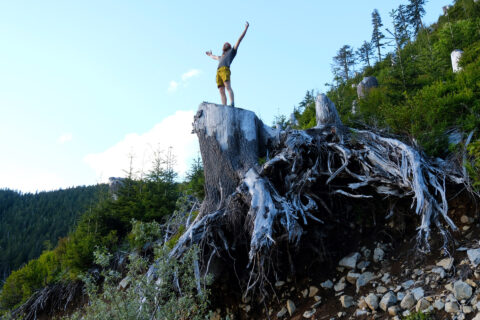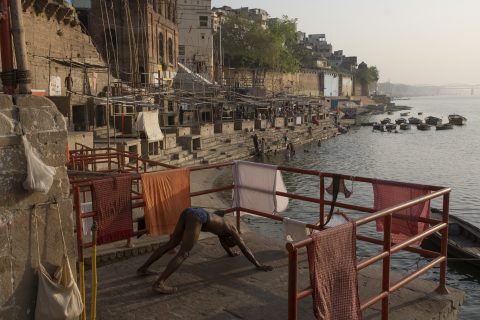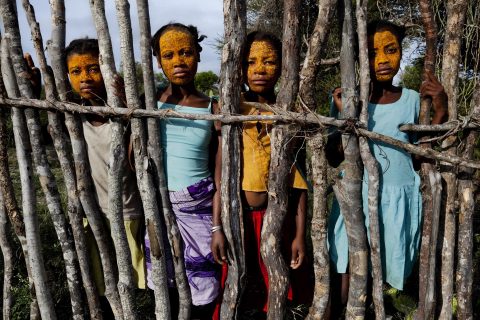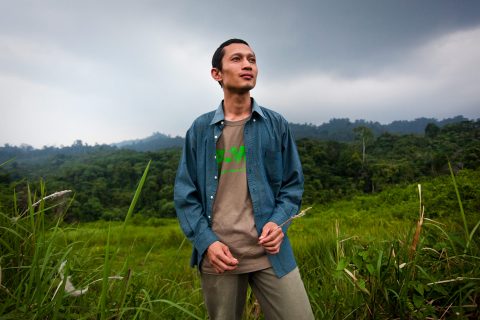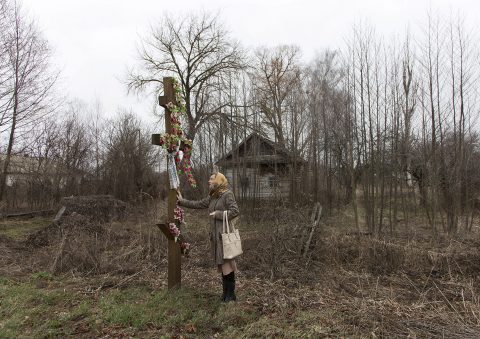Anna Dumitriu is a world reference for bioart. She has more than 130 exhibitions to her credit, a quarter of them solo, in prestigious galleries and museums (including science museums), and has collaborated, as an artist-in-residence and as a research fellow, with major British and international microbiology research centers. Her research in the world of art and science began around the time when the Internet became a useful and fast tool for learning new things, in the late 1990s.
“I was able to start exploring the most hidden meanderings of my interests and discover really unexpected worlds.” When she discovered that Escherichia coli bacteria are an integral part of our bodies and are not just malignant microbes that we pick up as a result of food poisoning, her enthusiasm led her to start a collaboration with one of the most prominent microbiologists in Southeast England, Professor John Paul. Dumitriu began exploring normal flora—the microorganisms that live on or in our bodies-at home, the first step toward creating the work Normal Flora.
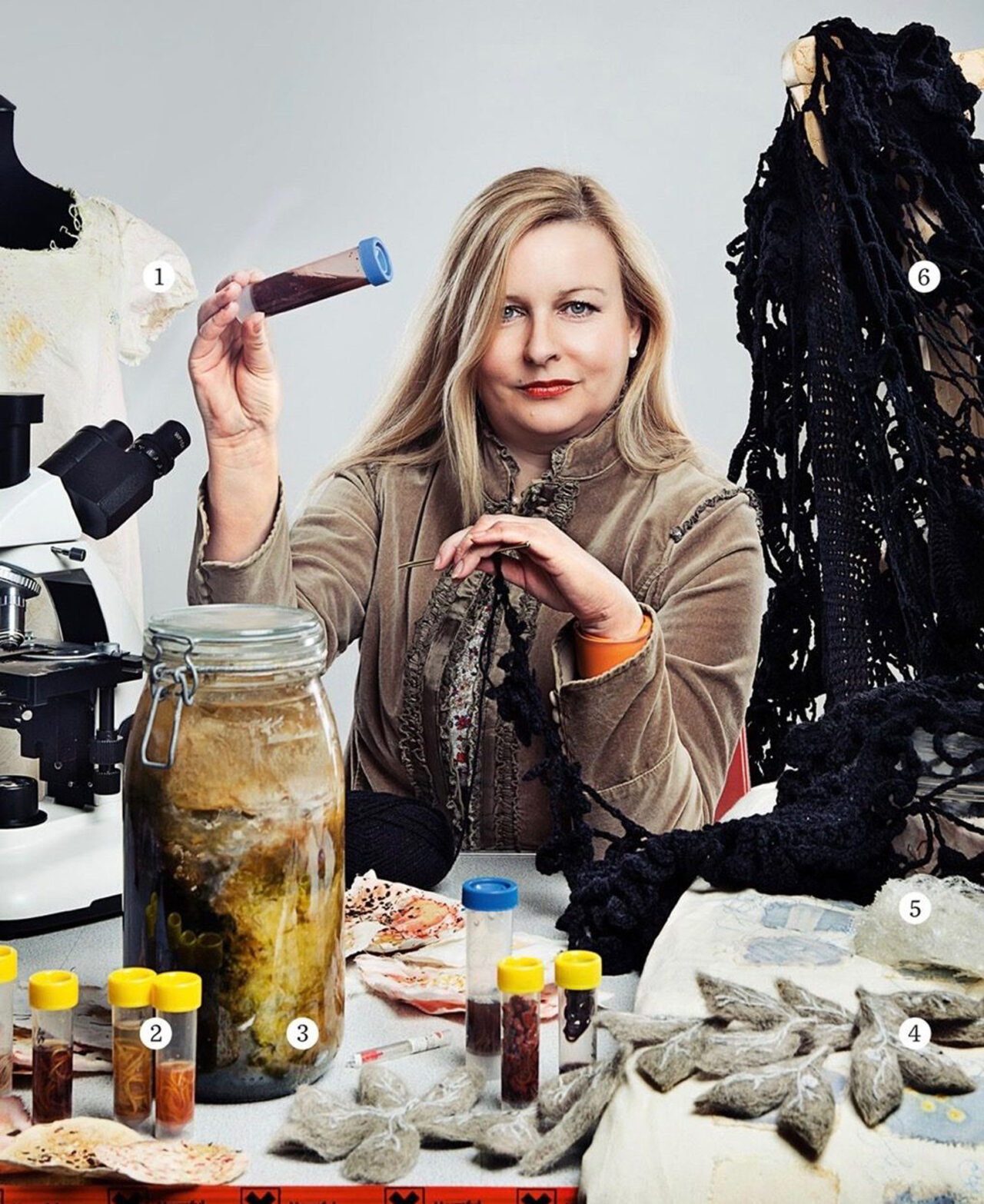
Anna Dumitriu in a laboratory. Photo by Anna Dumitriu.
Understanding the microbioma
The artist thus began to engage with scientists who were exploring the genomics of infectious diseases. “When the project began,” she says, “this area of microbiome study was not yet considered to be of commercial or medical interest, and little was known about it. The project highlighted how our scientific understanding of the world is limited by economics and how that, consequently, draws the boundaries of our understanding.”
It was with the advent of genomic technologies, the ability to sequence the entire genome of bacteria, that we were able to understand what we now call the human microbiome, the ecosystem of all bacteria that live in us, on us and around us. The Normal Flora project represented the interconnectedness of various life forms with an in-depth examination of the environment and microbial life through the creation of a series of artworks, participatory performances and workshops in research labs and schools.
READ ALSO: Why there’s no one-size-fits-all solution to plastic in the sea
A CENTER TO EXPERIMENT
In 2004, Anna Dumitriu founded the Institute of Unnecessary Research (IUR). Part art collective, part think tank, the IUR is a global center for experimental researchers and artists. For the IUR, art weaves networks of ideas, transgressing the boundaries of traditional academia and questioning the methods of knowledge production in the 21st century. “Artists are innovators, and our role is to engage and, if necessary, critique emerging technologies and scientific developments. Our artworks, lectures and other activities are designed to be accessible to audiences of diverse backgrounds in an engaging and thought-provoking way.”
Whether working in the fields of robotic synthetic biology, artificial intelligence, tissue culture, neuroscience, or virtual reality, philosophy and ethics are always at the heart of the IUR’s work, which examines the instrumentalization of science for commercial and political purposes. For Anna Dumitriu, putting scientists in one category and artists in another is a false dichotomy. Working transdisciplinarily is not only important but necessary so that methods and subjects can blur together. And it is just as important for scientists to engage and experiment with artistic methodologies as it is for artists to perform and intervene in science. “Having artists in the lab allows scientists to reflect on their work from a cultural and social perspective, which is an important and unique opportunity,” the artist explains.
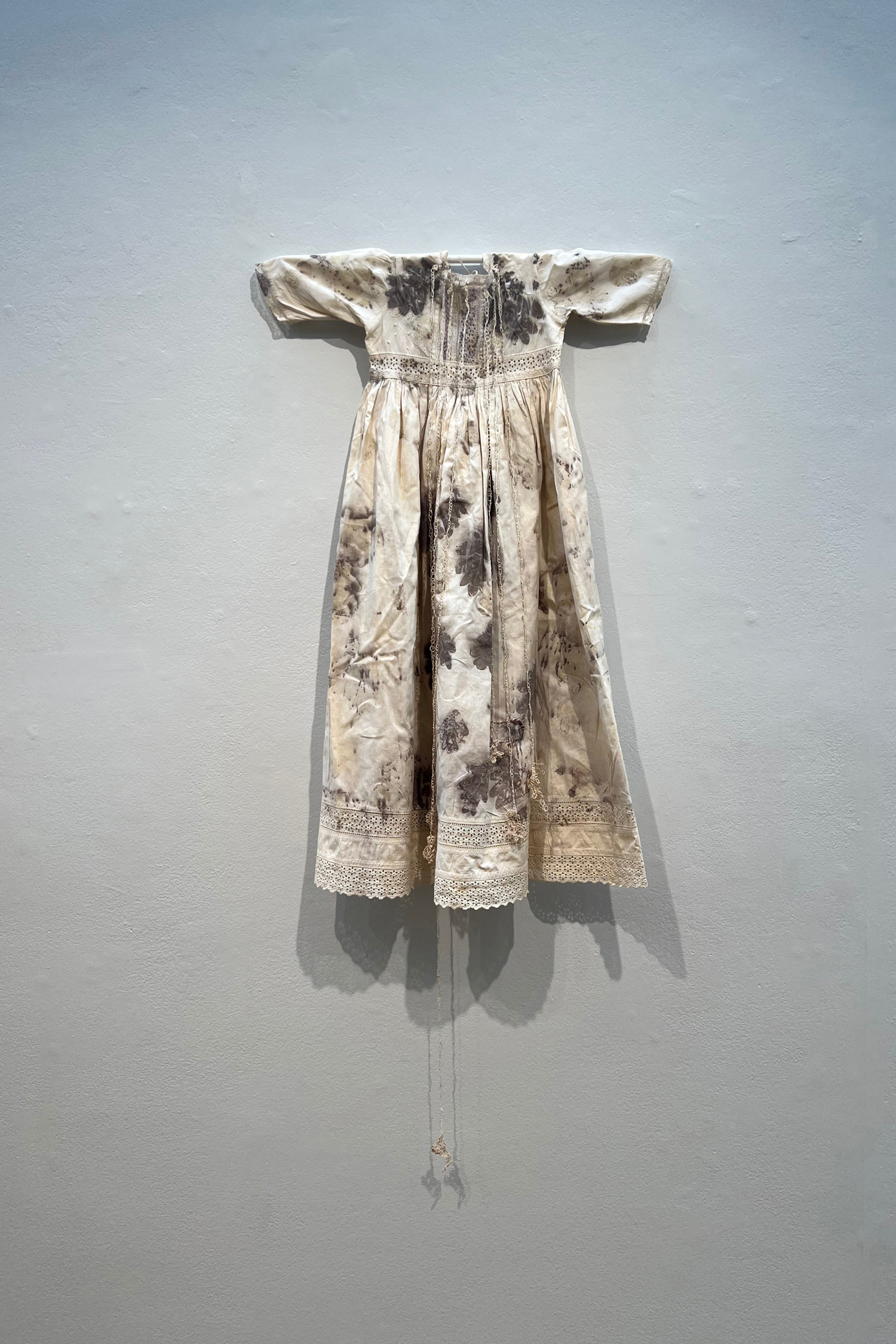
Bacterial Baptism, 2022. Photo by Anna Dumitriu.
ANNA DUMITRIU BRINGS SOCIAL CRITIQUE TO SCIENCE
For Anna Dumitriu, the most important skill an artist needs to work alongside scientists in a laboratory is the ability to ask questions, but more importantly to keep asking them until everything is clear. She loves working in the lab and undertaking the same experiments that researchers perform, learning to work with the same tools. This makes it possible to comment and intervene much more deeply in the scientific process and bring creativity, critique, and ethical and social reflection to the work. Dumitriu wants to understand the historical basis of scientific research from the beginning, and the future implications of the work. “I often find that much of what we talk about today is very similar to what our ancestors talked about, whether they were alchemists or so-called witches.”
One of her current but long-standing collaborations is with Dr. Jane Freeman, who works on the human microbiome. They have undertaken many projects together on gut bacteria and even human fecal transplants. One recent work, entitled Bacterial Baptism, explored how the microbiome of infants develops, with a focus on the bacterium Clostridioides difficile. “We worked together throughout the pandemic and met every two weeks online until I was allowed to return to the lab after the pandemic. My way of working is always to insert myself within the research and let ideas emerge from the scientific method, through hands-on work and discussion with scientists.”
Illness and prejudice
Anna Dumitriu goes into laboratories, does research, and sometimes takes samples home. However, this procedure is not always applicable in the same way. “Wherever you are in the world there are always cultural differences, different perspectives on art, science, philosophy, history and ethics,” she relates. “In the United States genetic modification and synthetic biology are much more common. In the European Union it is very difficult to get genetically modified crops out of the laboratory.”
Regarding infectious diseases, although health is a global problem, there are huge inequalities in health care around the world. “When I showed my Romantic Disease series of works in Tashkent, Uzbekistan, at the Doctors Without Borders conference on tuberculosis in Eastern Europe and Central Asia, I received a very different reaction than when I showed it in the UK.” Dumitriu tells how there is a huge stigma and still a high rate of spread of tuberculosis in many of the countries that made up the former Soviet Union. In Russia, for example, the burden of tuberculosis is still very high and access to health care and medication is poor for many people. The situation can only be exacerbated by the current war. “These are invisible victims of the conflict, who are not part of it, and it is very sad.”
In the UK, on the other hand (but also by us) people think of TB as a disease of the past, while two million people die from TB every year. The UK has been very innovative in applying cutting-edge genomic technologies to treat this disease. “I have worked extensively with collaborators from the Medical Microbiology Modernization Project and the CRyPTIC project at the University of Oxford to create the Romantic Disease series of works and an interactive data-driven digital work called Susceptible.”
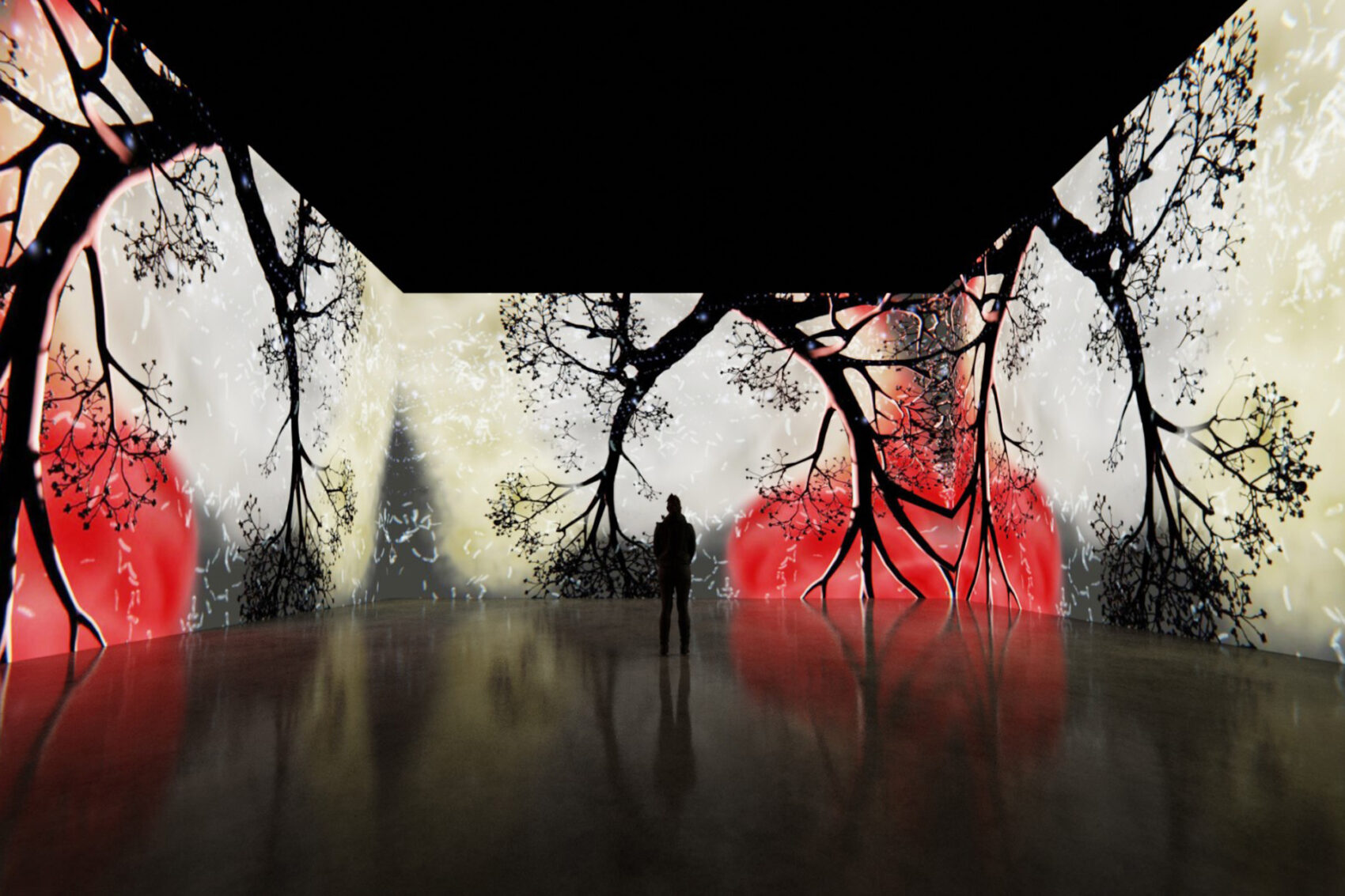
Susceptible installation. Photo by Anna Dumitriu and Alex May.
A ROOM OF ONE’S OWN DURING THE PANDEMIC
During the early stages of the COVID-19 pandemic, the artist created a work entitled Shielding. Shielding explored the impact of quarantine on women experiencing domestic abuse and the paradoxical significance of the home as a refuge. News reports around the world highlighted the significant increase in domestic violence during that time, when access to support for abuse victims was much more difficult due to infection control measures.
The work is inspired by Virginia Woolf’s feminist essay A Room of One’s Own (published in 1929), which states that women need their own safe space to thrive and be creative. This notion of “safe space” contrasts with the stark image of the hastily constructed temporary hospital ward that has become a familiar sight in the 2020 news. “Those who were locked up with an abusive partner had no safe space to escape to.” Social-distancing restrictions designed to stop the spread of COVID-19 have made violence in the home more frequent, more serious, and more dangerous. For people at risk of domestic abuse, the home has not been a place of safety and care: hotlines globally have seen an increase in calls by more than a third.
Shielding was impregnated with true SARS-CoV-2 RNA from a plasmid construct. This is a safe and noninfectious reagent. The SARS-CoV-2 RNA was provided by researchers Ines Moura and Jane Freeman of the University of Leeds, who are working on the development and use of an RT-PCR assay for the detection of SARS-CoV-2 in feces.
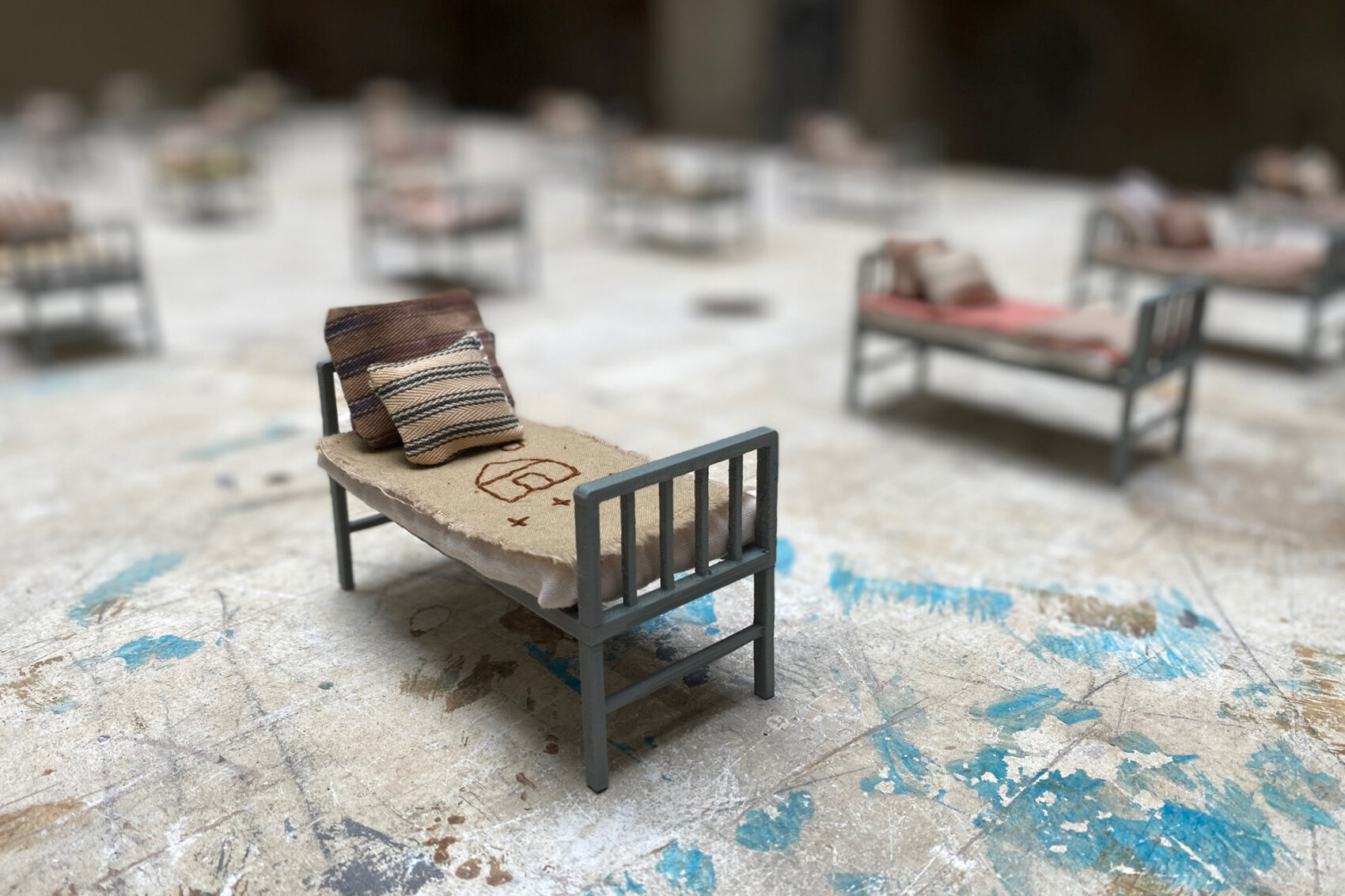
Shielding, 2020. Photo by Anna Dumitriu.
NEW TECHNOLOGIES
“I am constantly working with new technologies, exploring how they work and what they do and trying to learn how to use them. Trying to physically make something is the easiest way to learn what is possible.” Recently, the artist has been working extensively with synthetic biology techniques. According to the CRISPR Journal, she was the first artist to create a work of art using CRISPR/Cas9, the powerful genetic modification technique devised in 2012 by Emmanuelle Charpentier and Jennifer Doudna.
Anna Dumitriu also enjoys working with sensor technologies, robotics and biomaterials. “I have worked for many years with virtual and augmented reality to create immersive installations such as Sequence VR, which takes the viewer inside the entire genomic sequence of the bacterium Staphylococcus aureus. I like this way of working, but I think we have to be aware that big companies are trying to influence our use of these technologies for commercial purposes.”
READ ALSO: Clash of civilizations. The true history of the Selk’nam people
She has been working with blockchain and NFT technologies as a way to record her artistic process and all the storage data of physical artworks. The Unruly Objects series contains an RFID tag that points to a file containing all the artwork data. The idea is to use blockchain technology to guarantee the provenance of this preservation data and store future data when restorers take care of the work.
“I’m definitely intrigued by this technology, but I have some questions about how NFTs are used from an economic standpoint and some of the types of artworks that are shared because of them. I still prefer the idea of having a physical object that can be experienced in person.”
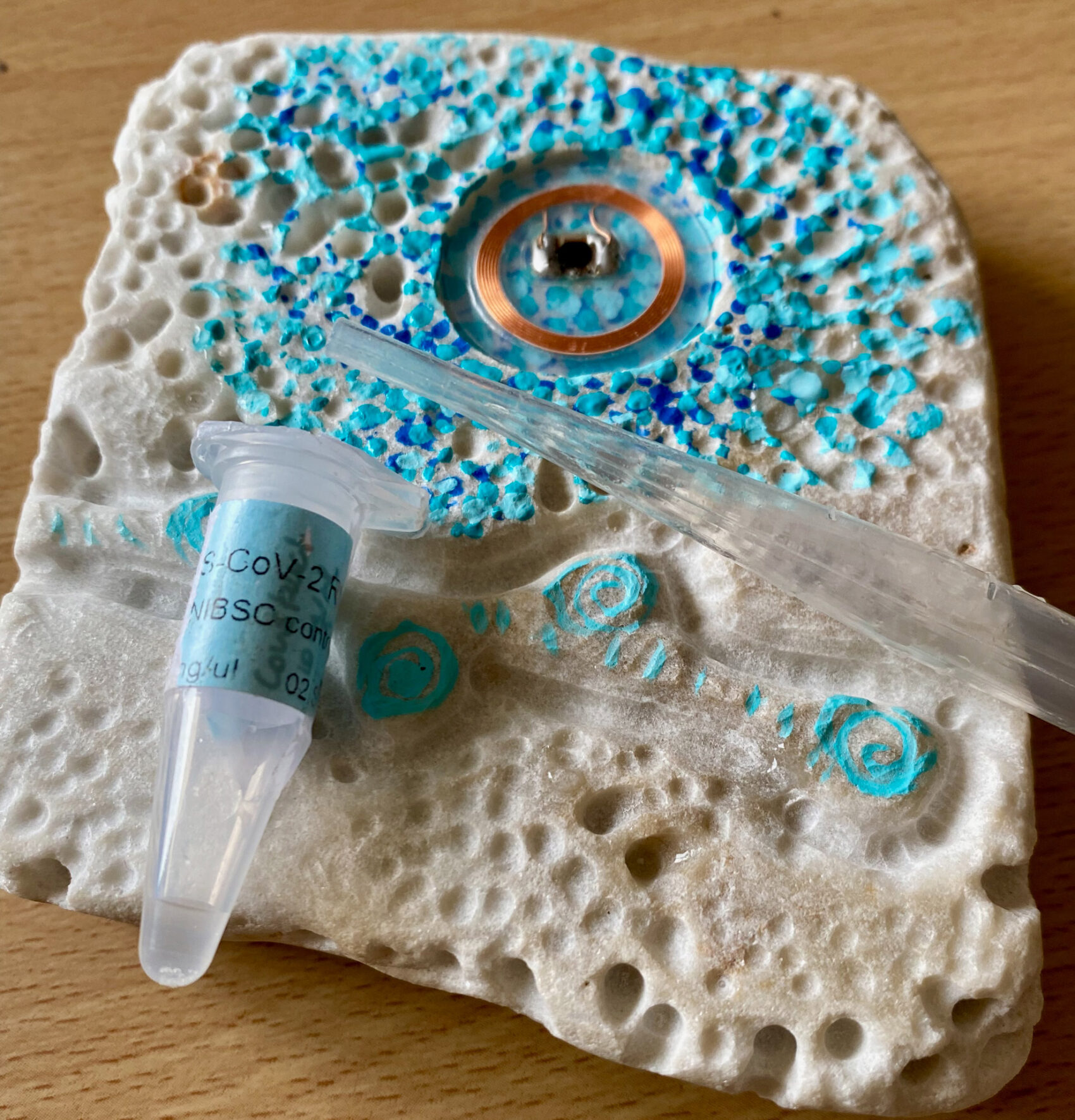
Unruly objects. Photo by Anna Dumitriu.
Imagining Life
Now Dimitriu is collaborating with the European project CAPABLE, along with colleague Alex May, to develop an artwork called the Physic AI Garden, which takes the form of a beautiful and dynamic digital garden, where virtual plants and mushrooms grow and interact with each other and the public. The plants represent different drugs; the garden grows based on which drugs work well together and which ones cause side effects. The public can “plant” seeds (via an iPad or sculptural interface), representing different pharmaceutical treatments within the ecosystem, and watch them bloom or wither depending on the interactions.
The collaboration with Alex May also resulted in ArchaeaBot, an underwater robotic installation that explores what “life” might mean in a post-climate change future. The work is based on new research on archaea, a group of single-celled microorganisms believed to be the oldest form of life on earth adapted to life in extreme conditions. Combining this knowledge with the latest innovations in artificial intelligence and machine learning, the artists sought to create the “ultimate” species, adapted to withstand the end of the world.


